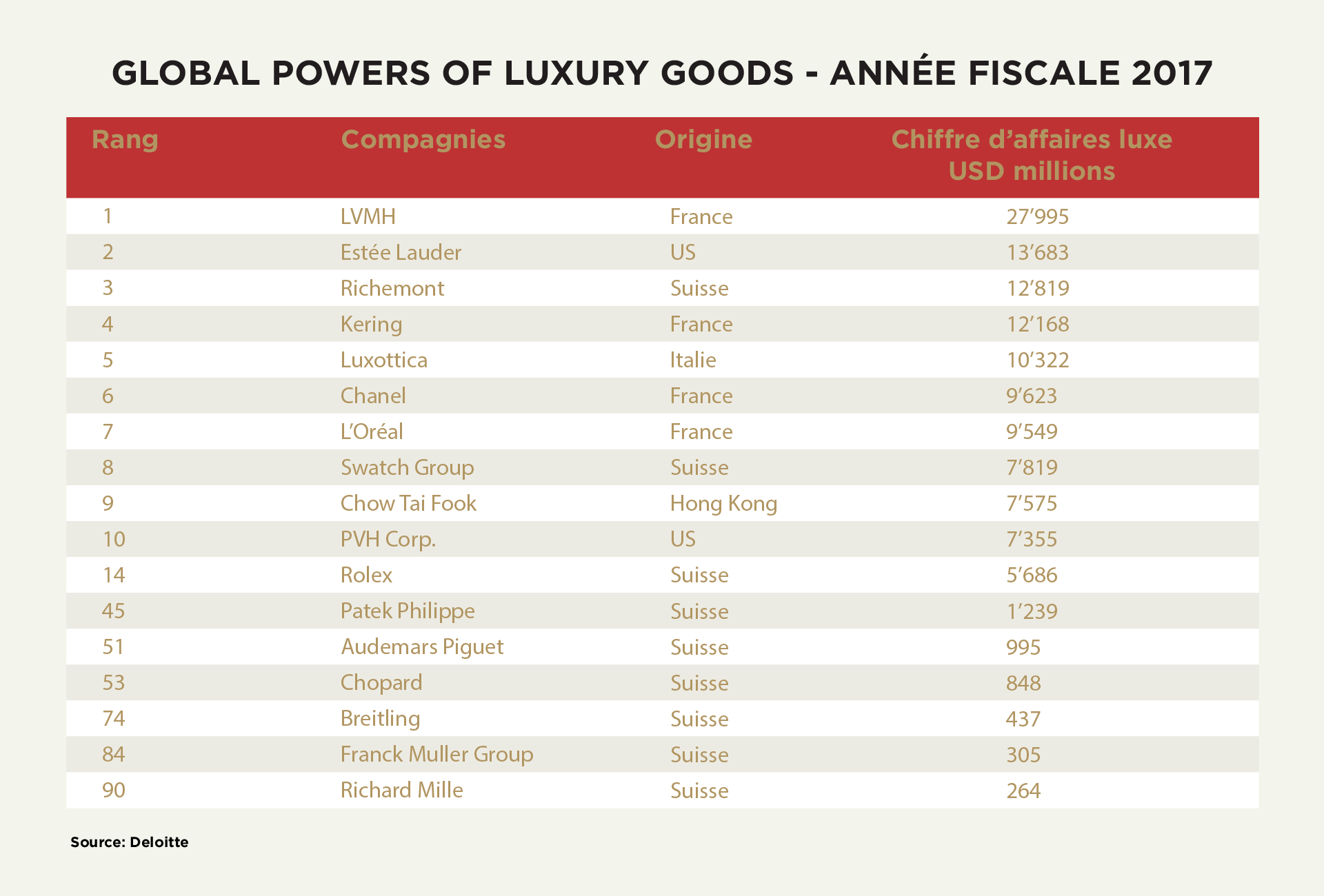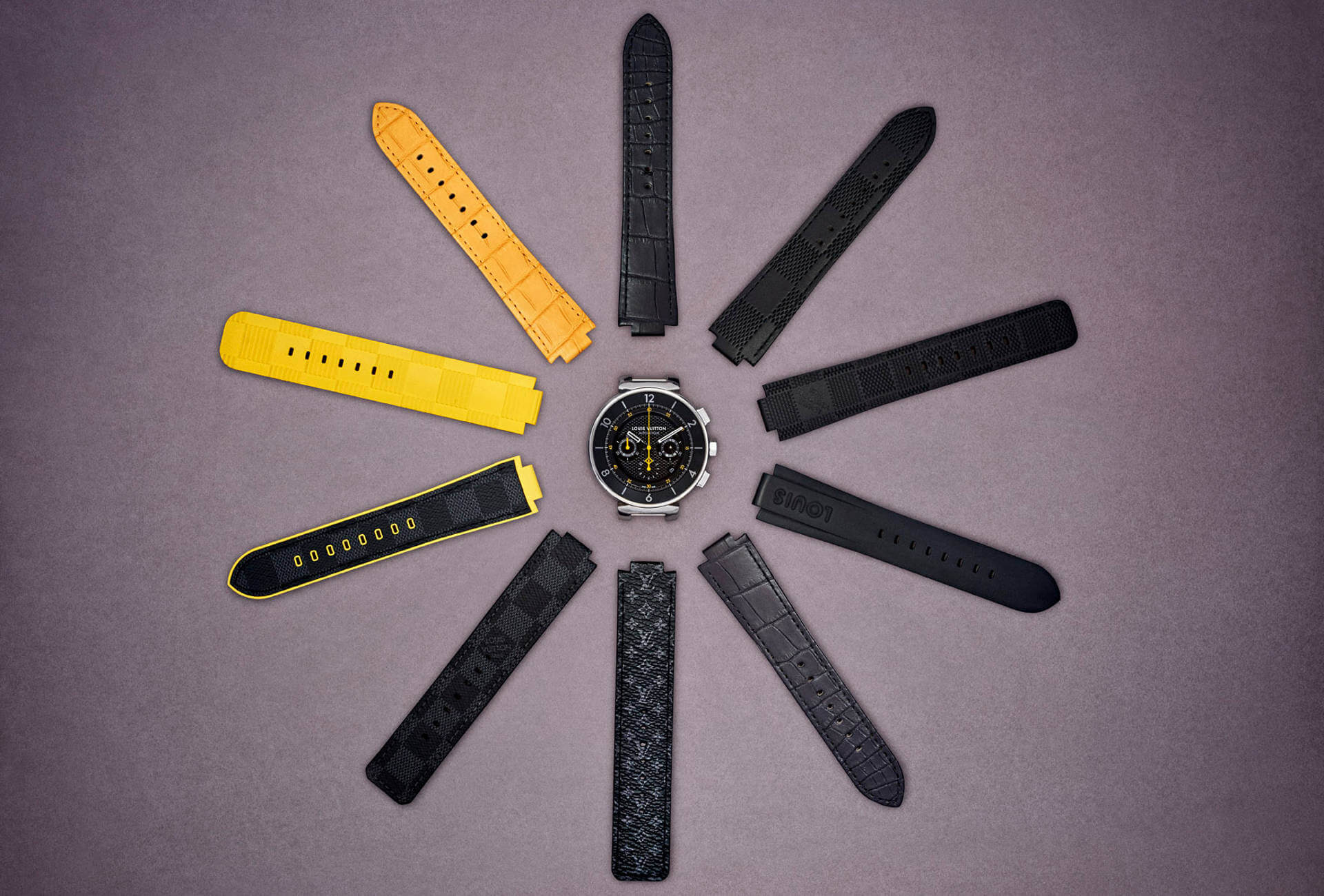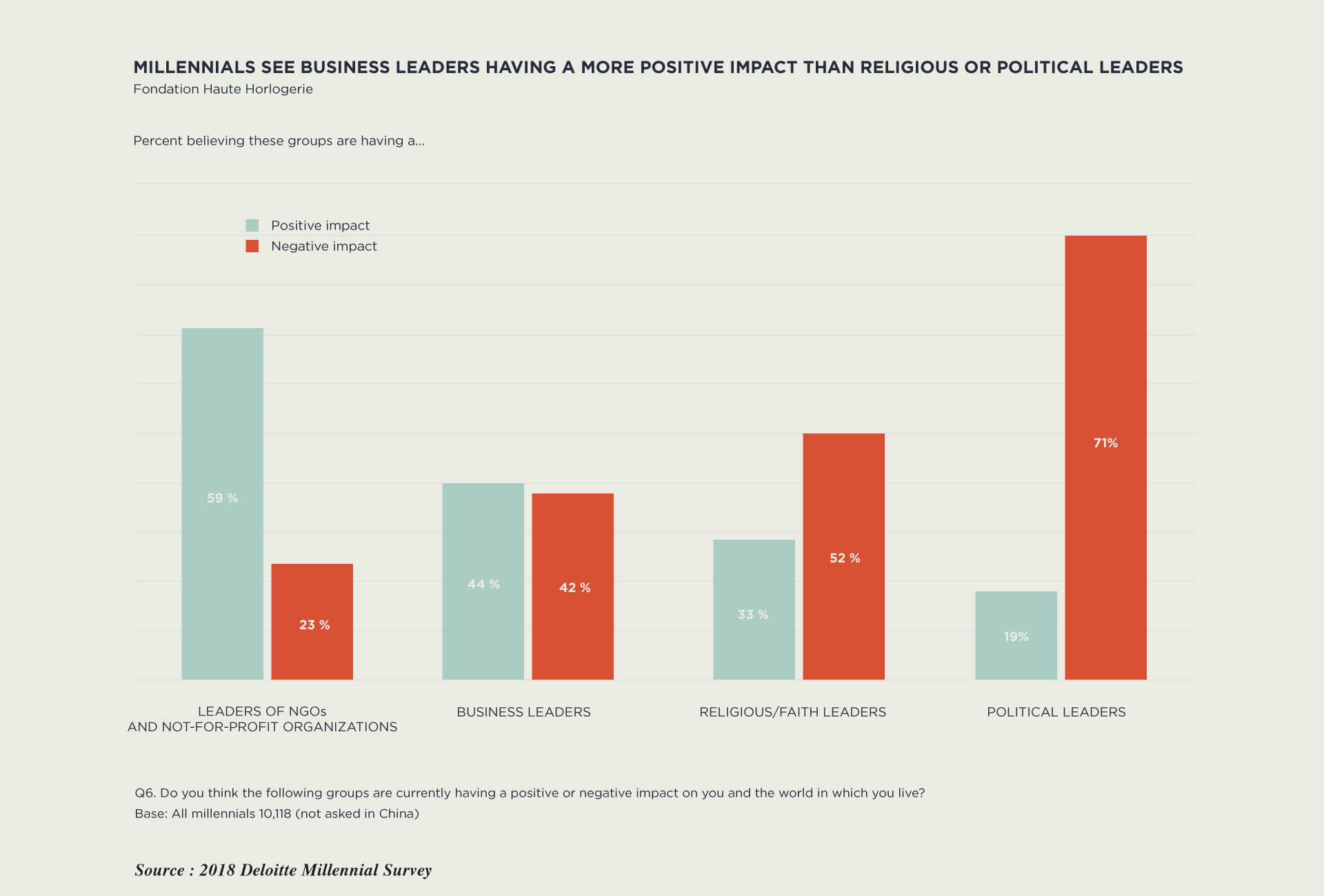Each year, Deloitte’s Global Powers of Luxury Goods examines and lists the 100 largest luxury goods companies globally (clothing, footwear, watches, jewellery, cosmetics, fragrances, bags and accessories) according to consolidated sales. The 2019 edition, which is based on FY2017, states that aggregated revenues for these giants came to US$ 247 billion. This corresponds to a comfortable 10.8% year-on-year increase in sales at constant exchange rates and an enviable net profit margin of 9.8%. Annual growth rate for 2015 to 2017 comes to 5.3% – a figure that could have been higher were it not for the small 1% growth recorded in 2016. Out of this Top 100, the ten largest companies (see table) significantally outperformed the rest, accounting for 48.2% of total luxury goods sales in 2017 alongside composite sales growth of 14.2%.
Chanel, which published its financial results for the first time in 2018, enters the Top 100 at sixth position.
At the top of the leader board, the three largest companies remain LVMH (US$ 28 bn luxury sales out of US$ 48.1 bn total sales in 2017), Estée Lauder (US$ 13.7 bn) and Richemont (US$ 12.8 bn). Kering (US$ 12.1 bn) moves up one place to rank fourth, thanks to strong growth in sales of 27.5% and in particular excellent performance by Gucci, knocking Italian eyewear group Luxottica (US$ 10.3 bn) down to fifth place. Chanel (US$ 9.6 bn), which published its financial results for the first time in 2018, is straight in at sixth position, ahead of L’Oréal (US$ 9.5 bn), Swatch Group (US$ 7.8 bn), Chinese jewellery group Chow Tai Fook (US$ 7.6 bn) and PVH Corp. (US$ 7.4 bn) which owns the Calvin Klein and Tommy Hilfiger brands. This is the first year that Ralph Lauren fails to make the Top 10, slipping to twelfth position. From a purely Swiss perspective, all nine Swiss companies that made it into the Top 100 operate in the watches and jewellery sector. Of these, seven are privately-owned, the remaining two being Richemont and Swatch Group. In 2017, they together posted a 7.7% average increase in annual sales, the top performer being Richard Mille at 15.6%.

Forget the past
Away from the numbers, the report provides an interesting analysis of the factors behind these luxury giants’ expansion. Deloitte begins by describing a new consumer class which, it says, will likely be highly relevant to luxury brands in the future. These are the high-spending, digitally-savvy HENRYs (High-Earners-Not-Rich-Yet) who direct their cash towards “inclusive, individualized, self-expressive” products. Deloitte suggests that brands build this demographic’s loyalty by endorsing their values of “authenticity, relatability and doing the right thing.” Sustainability is high on their agenda, and the report cites Rolex and its mentoring programme as an example of the type of behaviour these HENRYs expect. Unsurprisingly, social media are an important means of engaging with this tech-savvy generation, as Montblanc showed through its collaboration with the influential Chinese fashion blogger, Mr. Bags.
The 'new' luxury consumers only care about the brands that have created value for them in the last 24 hours.
What is surprising, on the other hand, is the need for brands to reconsider the value of heritage and history. Many luxury brands have existed for decades, centuries for some, and this longevity has always appeared to them as a sign of consistency, tradition and expertise. However, Deloitte warns that “long established luxury industry brands face a new reality. Given the shift in the demographics of consumers across the globe, luxury brands that used to boast of their long history are finding it less effective. The reality is that ‘new’ luxury consumers only care about the brands that have created value for them in the last 24 hours.” When it comes to splashing the cash, history and heritage no longer hold the appeal they once did. When making purchasing decisions, today’s luxury buyers are more concerned with quality, customer service, design, craftsmanship and exclusivity. For brands to remain relevant, they need to focus less on their past and instead secure greater modernity, including when this means “contaminating” their brand with new sources of creativity such as streetwear.













